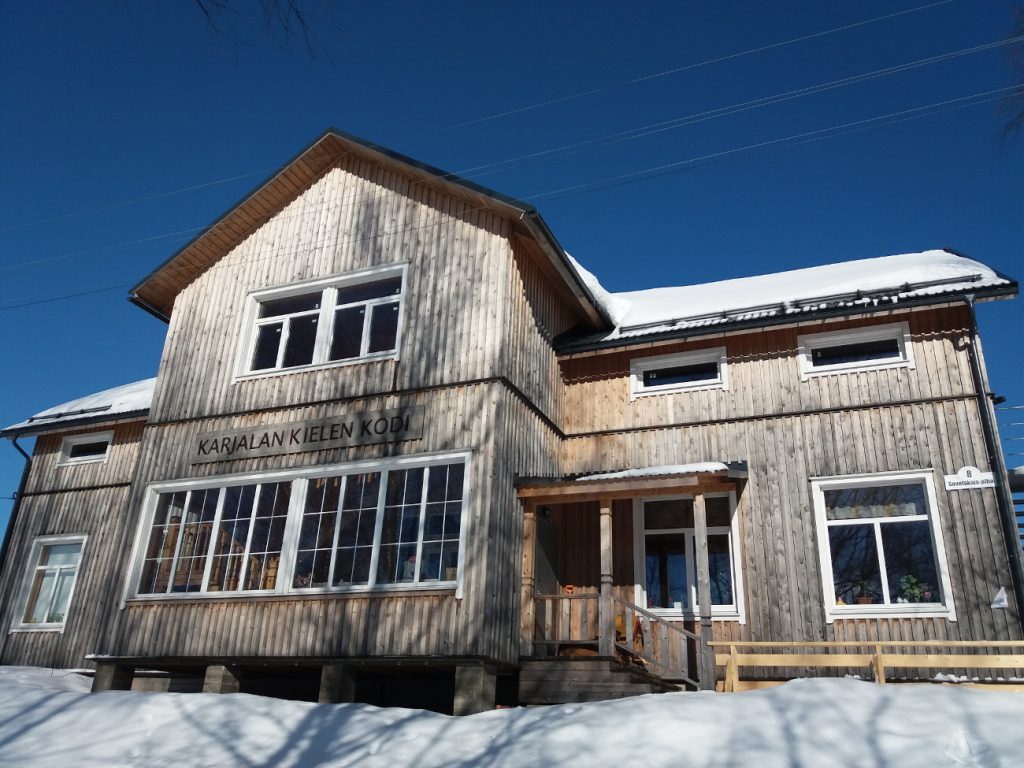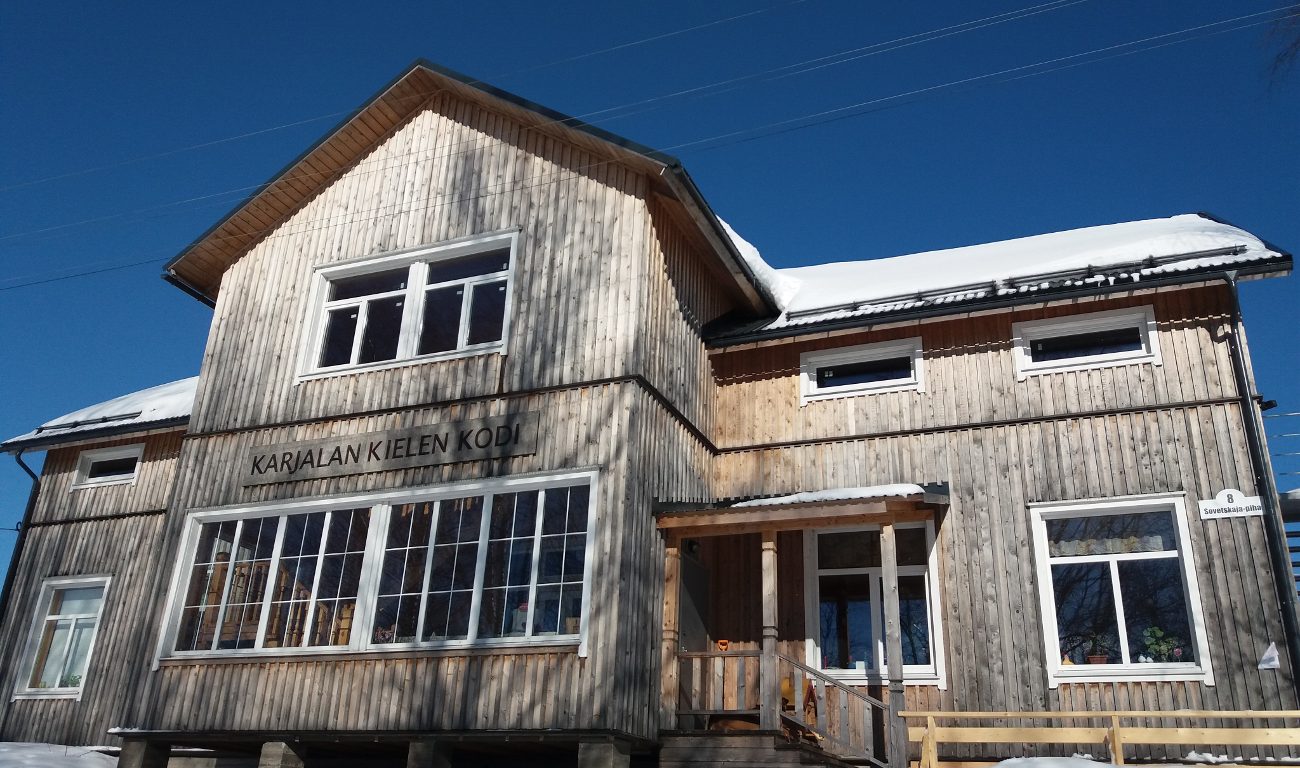I started my studies in Tartu in autumn 2016. In my doctoral thesis I study organizations working with the issues of indigenous Finno-Ugric peoples. This spring I went to Komi and Karelia for the field work of my research. My aim was to conduct interviews with the representatives of NGOs, educational organizations and governmental bodies as well as to work in the libraries. Here you can read the story of how it went. Let me start with the trip to the Karelian countryside.
My trip started with visiting Kinerma and Vedlozero – Karelian villages hosting incredible indigenous heritage. I should say coming there was not so easy: the connection with Petrozavodsk is poor (there are some direct buses several times (or just once) a week) so I had to take a taxi (riding with an unknown taxi driver in the darkness – not all road segments are lit – is a special “joy”; you can call it “the price of being in the Karelian wonderland” if you want). After a two-hour trip from Petrozavodsk (let me be diplomatic: the roads could be of better quality), I was on the spot. The hospitable Olga Gokkoeva with her mother Anna Ivanovna Kuznetsova (nice coincidence – we have the same name and last name) were my hosts for four days there. By the way, if you have visited the Estonian National Museum, you might see Anna Ivanovna there on a photo at the Uurali Kaja exhibition! The world is small, isn’t it?
The first thing that amazed me in Kinerma was their house: the windows are designed with beautiful patterns, inside you can see traditional clippy mats and an oven, a big wooden table, benches, and even a loom where Anna Ivanovna makes nice carpets. After the dinner we went to the hot sauna which was built by Olga’s husband.
I mentioned Olga’s husband and it came to my mind how I actually met Olga. Short story is here. Last autumn I had an internship at the International Barents Secretariat in Kirkenes, in the far north of Norway. Surprisingly to me, Roman Gokkoev, the Executive Officer of the Secretariat, was born in Russian Karelia and was involved in Finno-Ugric affairs. Thanks to Roman, I met his wife Olga, with whom we spent some dark Norwegian evenings in the sauna talking about the destiny of Finno-Ugric peoples. Again, the world is small, isn’t it?
The next morning we went to Vedlozero – neighboring village 10 km away from Kinerma. As there is no permanent connection between these two villages, we used Olga’s car to get there. Some people walk there. I am not sure how safe it is as the road is literally in the forest. Olga’s nephew told that last summer he saw a bear while having a bicycle trip on this road. Anna Ivanovna jokes: “Wolves do not touch the locals” (“волки своих не трогают”). I did not risk it, just in case.
Olga is the Chairperson of the local NGO “Home of the Karelian Language” located in Vedlozero. As it follows from the name, the organization takes care of the Karelian language and tries to improve the local people’s quality of life by organizing sport activities in Karelian and courses on the Karelian language and handicrafts and by hosting a theater group and a library. Two years ago, a language nest was opened there, which is a kindergarten where only Karelian is used. The method is effective in revitalizing the minority language as children learn Karelian as their native language during the whole day without any instructions in Russian. After conducting interviews with Olga and Nina Barmina (the host of the Home), I had a chance to talk with Natalia Antonova, the mastermind and organizer of the language nest. Natalia is very experienced in the issues of language protection as she has worked as an NGO activist for a long time and gotten involved in many projects related to language revitalizing. I am happy I could meet these professionals, and their thoughts will be definitely useful for the research.

It is important to note that the Home of the Karelian Language was created with donations from the local population and some funds. The wooden house has two floors (the second floor is still under construction); the first floor locates a big room for gatherings, a room for Karelian language classes, a room for handicraft workshops, and a room for the language nest where children spend most of the time playing, eating, sleeping, and, of course, learning Karelian.
The work of Olga and Natalia and the idea of the Karelian language house is a very good example of what people can do if they really want to save their culture and language: waiting for someone else to come and help is not a good strategy; if you want to change the world (even a small one – the world of your community), you should act yourself.
After the main work was done, I had a chance to walk around and enjoy the real Karelian villages and landscapes. Before coming there, I did not know Kinerma is a member of the Association of the most beautiful villages of Russia. There are only 16 houses (“courtyards” – дворов) and 5 permanent residents there. All houses are built in one style (even when the residents re-build them, they try to keep the style): grey wooden rectangular buildings with white windows, some of them have wooden carved patterns. There is an old church built in 18th century which is a monument of architecture under the protection of the state (which, however, complicates the renovation a bit: local residents wanted to build a bell tower which was destroyed during the Soviet times, but now the procedure demands more money and a more complicated procedure (inspections, permissions and so on)). Olga’s family even created a museum where the history of Kinerma is presented with some pictures and artifacts.
After almost four days of staying in the wonderful Karelian hinterland I had to leave as I had more interesting visits and talks ahead. The next destination was the capital city of Komi – Syktyvkar – which I will write about later.
Text and pictures by Anna Kuznetsova, History PhD student at the University of Tartu
